Embarking on an ecommerce venture and not quite sure how to begin marketing? Considering the ever-increasing use of social media, this is a great first step when it comes to your internet marketing strategy.
From Facebook and Twitter to YouTube and Snapchat, your target audience can be found across many different social media platforms. But before launching yourself into social media marketing, you should consider the demographics and users of each of these platforms and their potential.
LinkedIn is one of the most popular social media sites in the world today and it calls itself “the world’s largest professional network.” Given its more formal and professional image, a LinkedIn strategy can differ greatly from that of other social media sites.
To understand how to optimize your LinkedIn marketing strategy, you’ll first need to understand the different LinkedIn demographics, including the number of LinkedIn users, its gender divide, LinkedIn’s advertising statistics, etc.
In this article, we’ll list 10 important LinkedIn statistics you should consider when launching your ecommerce brand’s social media marketing strategy. Let’s jump right in!
Post Contents
- 1. Number of LinkedIn Users
- 2. LinkedIn Demographics: Gender
- 3. LinkedIn Demographics: Age
- 4. LinkedIn Demographics: Education
- 5. LinkedIn Demographics: Job Seniority
- 6. LinkedIn for Business
- 7. LinkedIn’s Popularity Among B2B Marketers
- 8. Reach of LinkedIn Ads
- 9. LinkedIn’s Role in Buyer’s Journey
- 10. LinkedIn’s Mobile Traffic
- Summary: LinkedIn Statistics



1. Number of LinkedIn Users
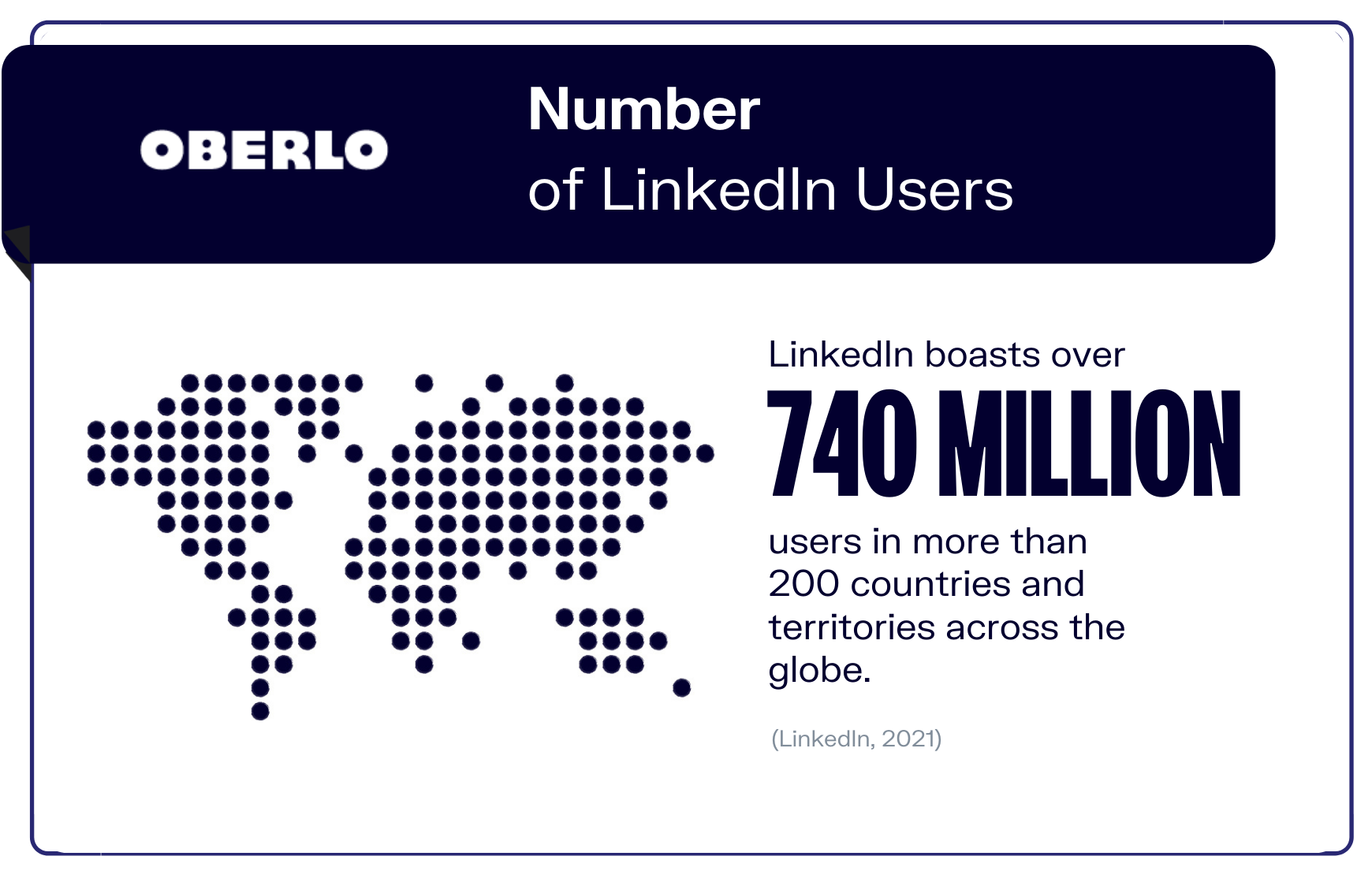
LinkedIn boasts over 740 million users in more than 200 countries and territories across the globe (LinkedIn, 2021).
Officially launched in 2003, LinkedIn’s growth has been nothing short of phenomenal. In just two years, it amassed 1.6 million members.
Even so, this initial LinkedIn growth rate was relatively slow compared to the spurt it achieved after going public in 2011. In the five years that followed, LinkedIn nearly tripled its user base from 160 million to 400 million. Just a year later in 2017, it crossed the half-a-billion mark.
Today, nearly half (48.4 percent) of its users come from North America and Europe. Specifically, 194 million are in North America and 166 million in Europe.
However, the region with the highest number of LinkedIn users is Asia Pacific, home to more than 201 million users. There are 110 million LinkedIn users in Latin America and 65 million in the Middle East and Africa.
2. LinkedIn Demographics: Gender
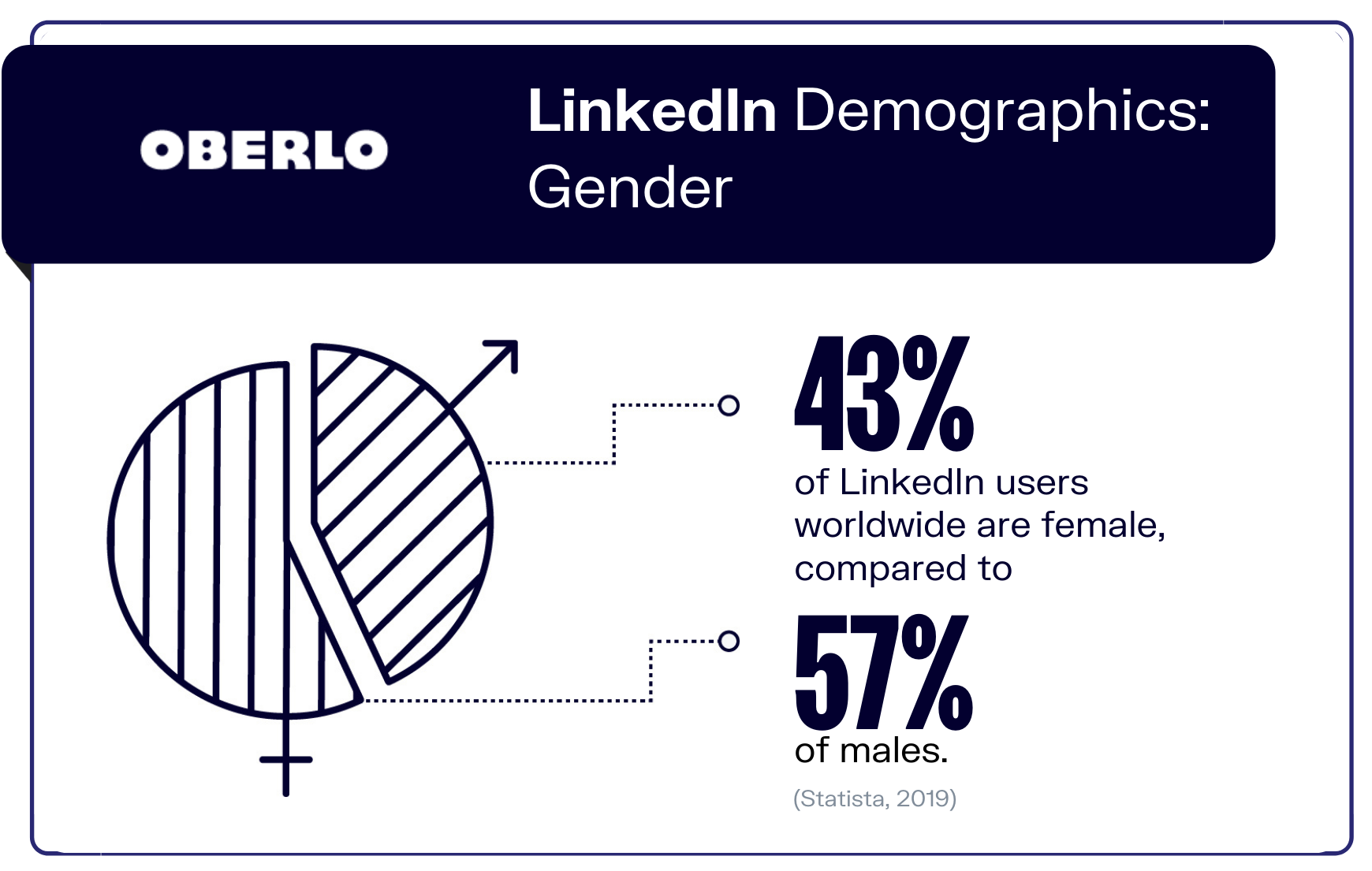
Looking at LinkedIn’s demographics, and more specifically at the gender divide, the professional network is more popular among males than females.
57 percent of LinkedIn users worldwide are male, compared to 43 percent of females (Statista, 2019). LinkedIn statistics also suggest very different engagement habits with the platform between men and women.
Women are slightly more selective about their job applications and feel that they have to satisfy 100 percent of the stated requirements before applying (compared to just 60 percent by males). Interestingly, women also apply to 20 percent fewer jobs than men.
The tables turn, however, after the application process: women are 16 percent more likely than men to get hired after applying.
3. LinkedIn Demographics: Age
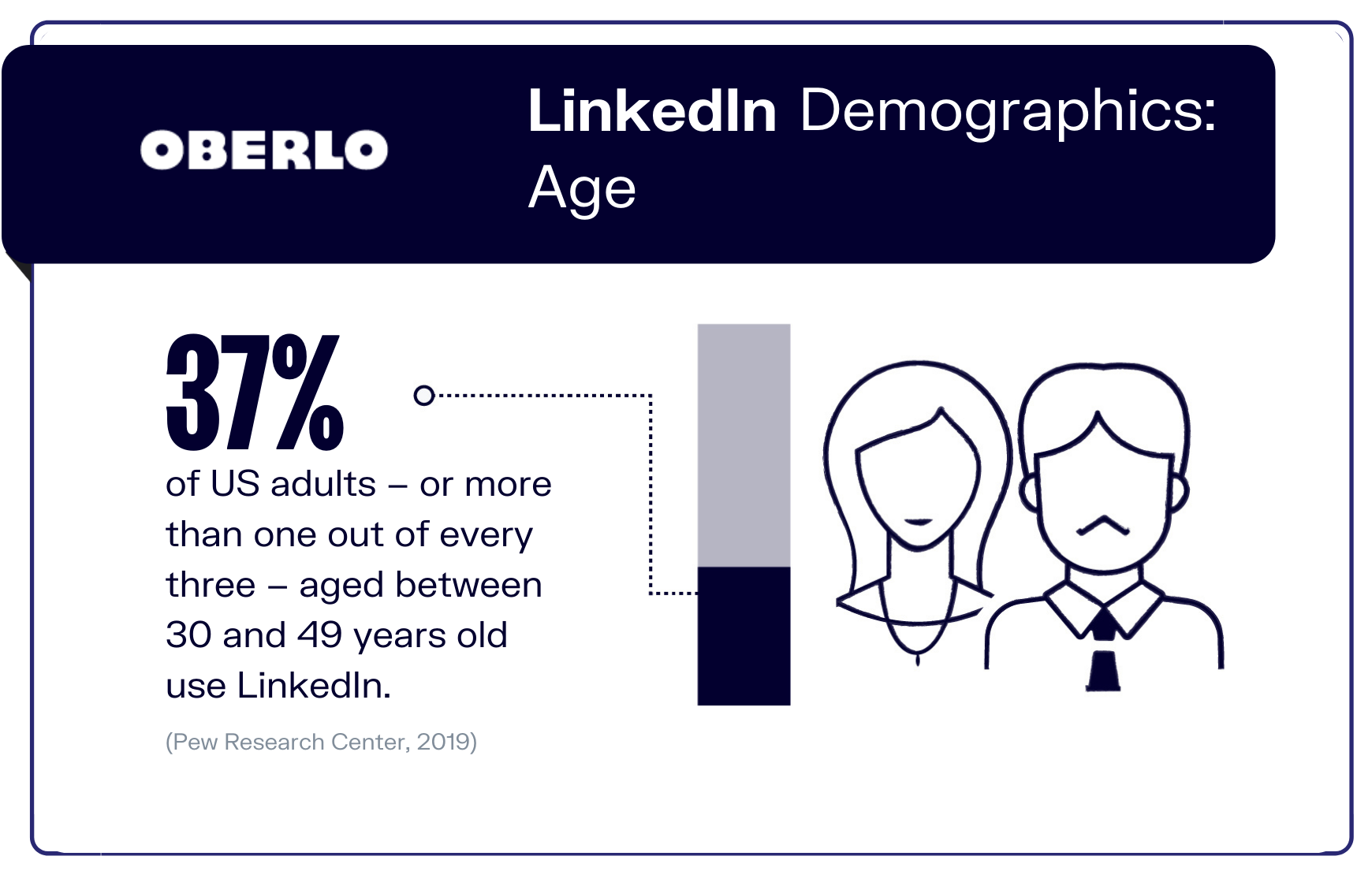
When setting up a LinkedIn ad campaign, you should also consider the LinkedIn age demographic.
37 percent of US adults – or more than one out of every three – aged between 30 and 49 years old use LinkedIn (Pew Research Center, 2019). This is the largest age group US LinkedIn users fall into, after which is the 18 to 29 years old age group making up 28 percent.
In terms of global usage, the majority of LinkedIn users – or 38 percent, to be exact – are between 25 and 34 years old. 35- to 54-year-olds account for 30 percent of the platform’s total user base, followed by 24 percent of users in the 18- to 24-year-old category.
It is also this latter group in which LinkedIn’s popularity is growing the fastest. As it stands, 18- to 24-year-olds make up a quarter of LinkedIn’s overall advertising audience.
4. LinkedIn Demographics: Education
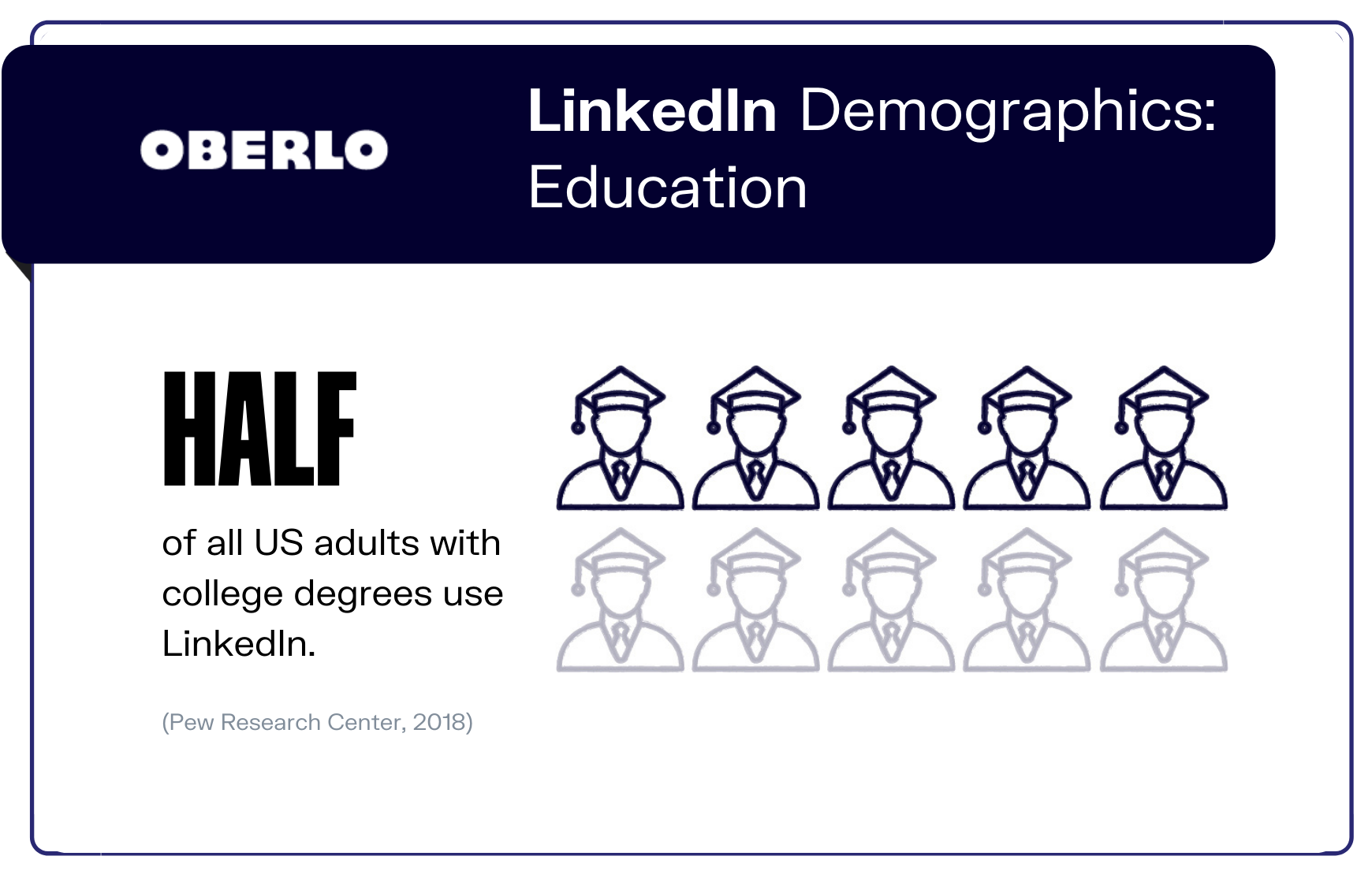
When planning a LinkedIn ad campaign, it’s also important to consider other LinkedIn demographics such as the academic backgrounds of your target audience.
You may be interested to know that half of all US adults with college degrees use LinkedIn (Pew Research Center, 2018). In comparison, just 42 percent, 39 percent, and 32 percent of all college graduates in the US use Instagram, Pinterest, and Twitter respectively.
The usage of LinkedIn among US college graduates is, however, much lower than that of YouTube and Facebook. 85 percent and 77 percent of US adults who have graduated from college use YouTube and Facebook respectively.
5. LinkedIn Demographics: Job Seniority
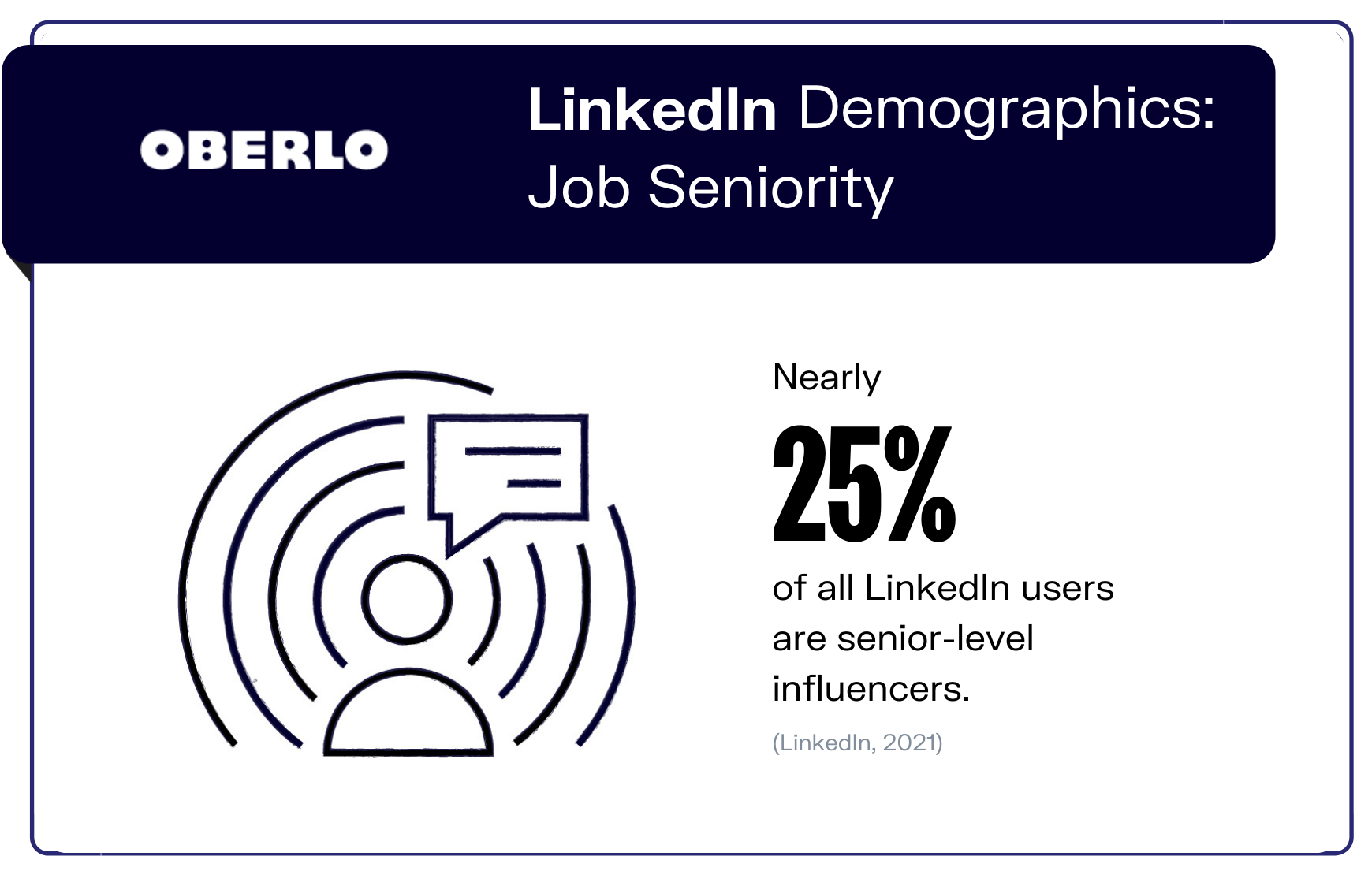
With hundreds of millions of LinkedIn users, there are plenty of interest and targeting options for marketers who want to advertise on LinkedIn. To do that, aside from understanding your target audience, you also need to understand the type of audience that’s on LinkedIn.
LinkedIn is the biggest business social media site. This means that the audience you’re targeting is made up of professionals who engage on the platform on a business level. Not just that, statistics show that four out of five LinkedIn members have the influence to drive business decisions.
Since LinkedIn allows you to research and target your audience by seniority, it is important for marketers to understand the demographics of those professionals on the site.
According to LinkedIn, of all its users, 180 million are senior-level influencers (LinkedIn, 2021). That makes up nearly 25 percent of its total user base.
At 63 million, more than one in eight LinkedIn users are decision-makers and about 10 million are categorized as C-level executives.
6. LinkedIn for Business
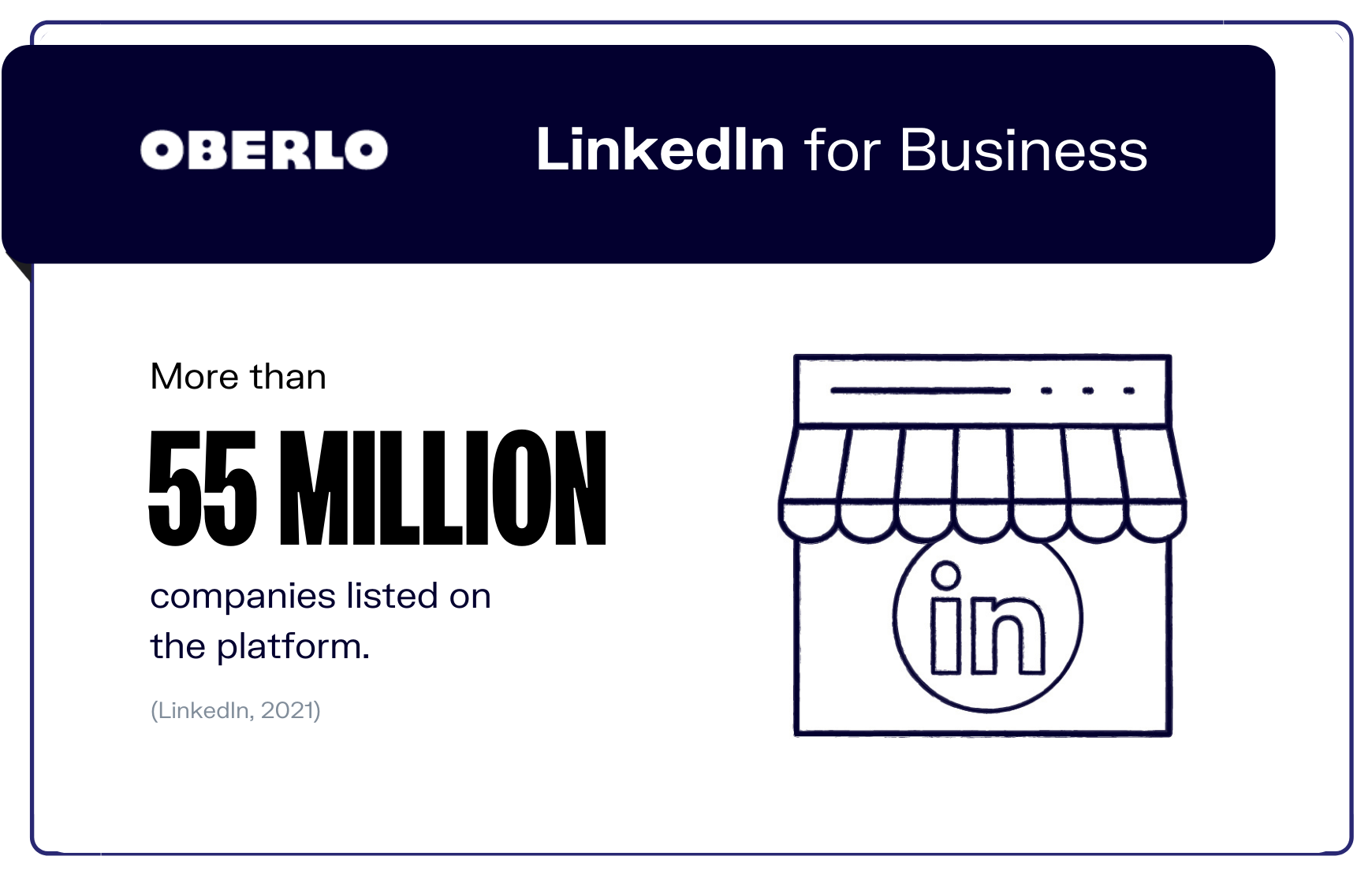
As a professional network, LinkedIn is popular not only among job seekers but also businesses, with more than 55 million companies listed on the platform (LinkedIn, 2021).
However, this doesn’t mean that all of these 55+ million business listings are created and managed by their respective companies as LinkedIn automatically generates business listings when a user adds experiences from organizations that are yet to be listed.
Even then, this still means that LinkedIn is well on its way to its goal of getting all 70 million companies in the world to have a profile on its network.
As it stands, these registered companies are listing millions of jobs on the platform – and to much success: LinkedIn statistics show that three people are hired through their platform every single minute.
These LinkedIn statistics only go to show the dominance of the platform in the professional work environment. In fact, every single Fortune 500 company is represented on the platform by at least one upper-level representative.
7. LinkedIn's Popularity Among B2B Marketers
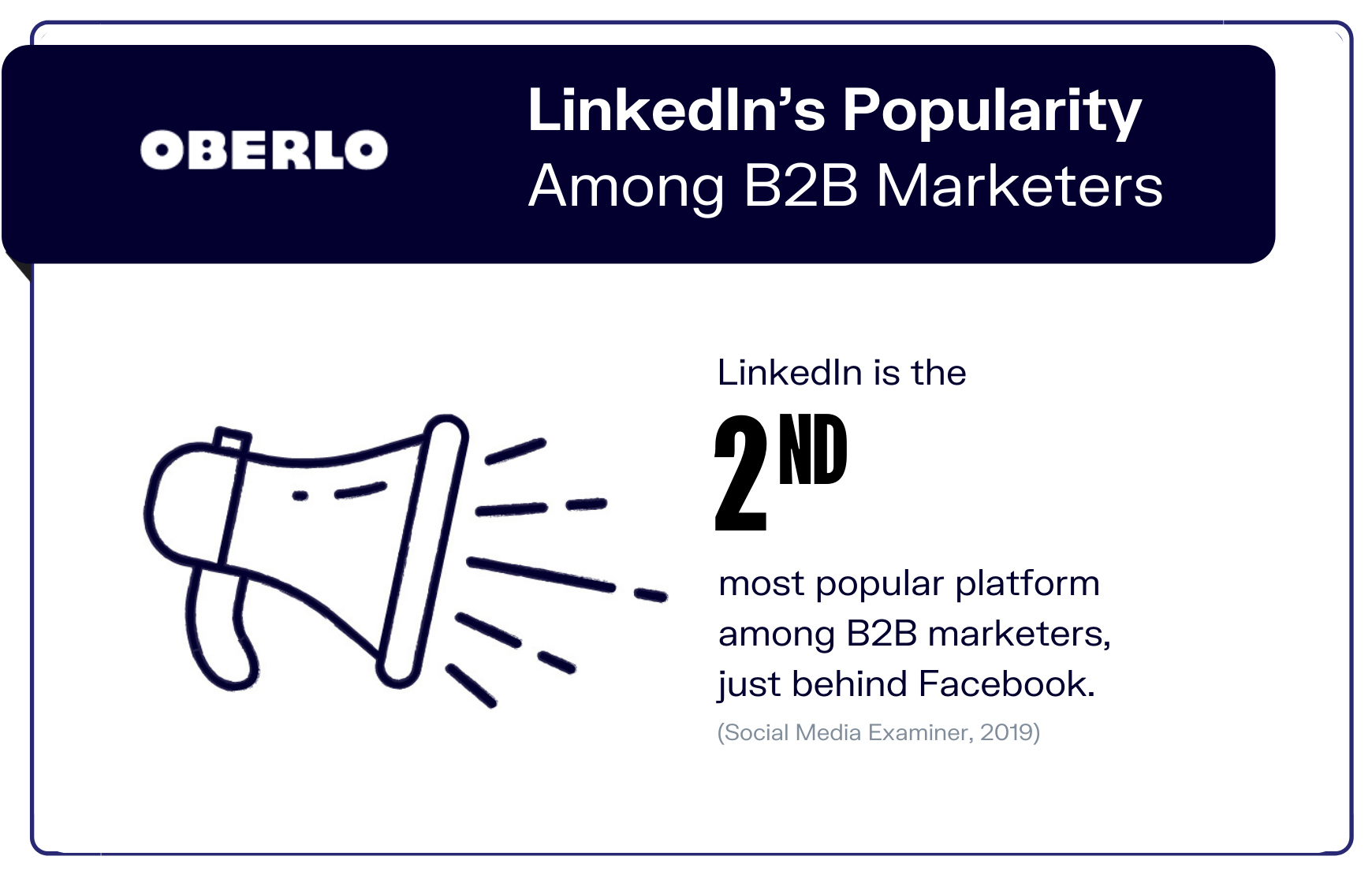
Of all the social media sites, LinkedIn is the second-most popular platform among B2B marketers, just behind Facebook (Social Media Examiner, 2019).
Four out of every five B2B marketers use LinkedIn, compared to 91 percent of B2B marketers who use Facebook. That puts it ahead of Twitter, Instagram, and YouTube, which are used by 67 percent, 66 percent, and 54 percent of B2B marketers respectively.
Despite its popularity among B2B marketers, the professional network doesn’t seem to be quite as popular as a marketing platform for businesses as its rival, Facebook. Just 14 percent of marketers chose LinkedIn as the most important platform for their business, while 61 percent chose Facebook.
Marketing activities on LinkedIn may, however, be on the rise. 70 percent of B2B marketers are planning on increasing their organic activities on the platform – something to consider for your LinkedIn strategy.
8. Reach of LinkedIn Ads
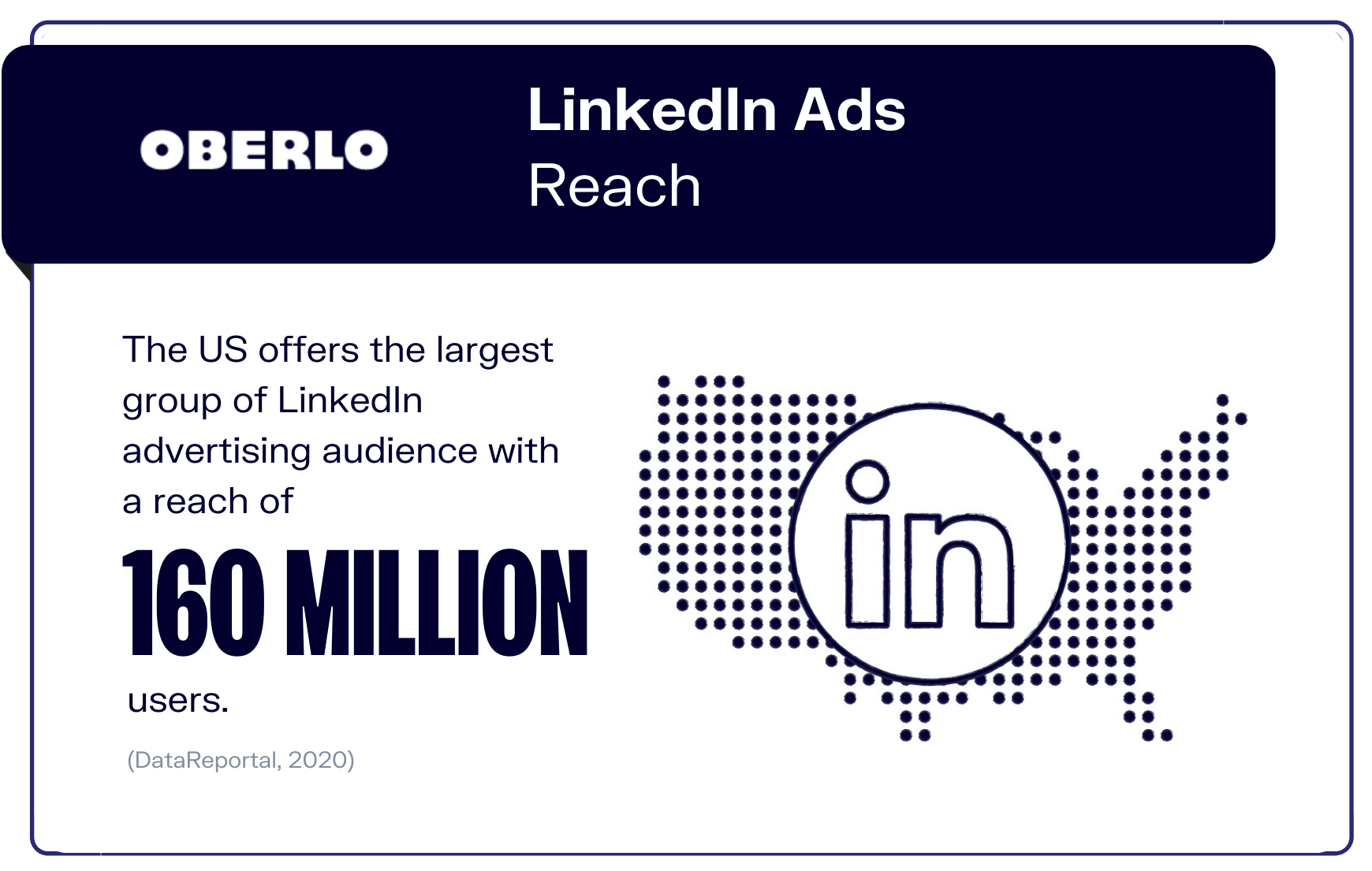
The previous LinkedIn statistic should come as no surprise, considering that LinkedIn is an advertising goldmine that’s constantly growing. This is especially important for brands and companies that are trying to connect with professionals around the globe to be aware of.
To understand LinkedIn advertising, it’s important to know the potential of your advertising reach. The latest LinkedIn statistics show that as of January 2020, 663.3 million people can be targeted with LinkedIn ads (DataReportal, 2020). That represents a 1.6 percent quarterly growth of LinkedIn’s reach.
Of these, the US offers the largest group of LinkedIn advertising audiences with a reach of 160 million users. In fact, LinkedIn users in the US have the most potential to be reached via advertisements, with 2.5 times as powerful a reach as second-placed India with 62 million users and third-placed China with 50 million users.
9. LinkedIn's Role in Buyer's Journey
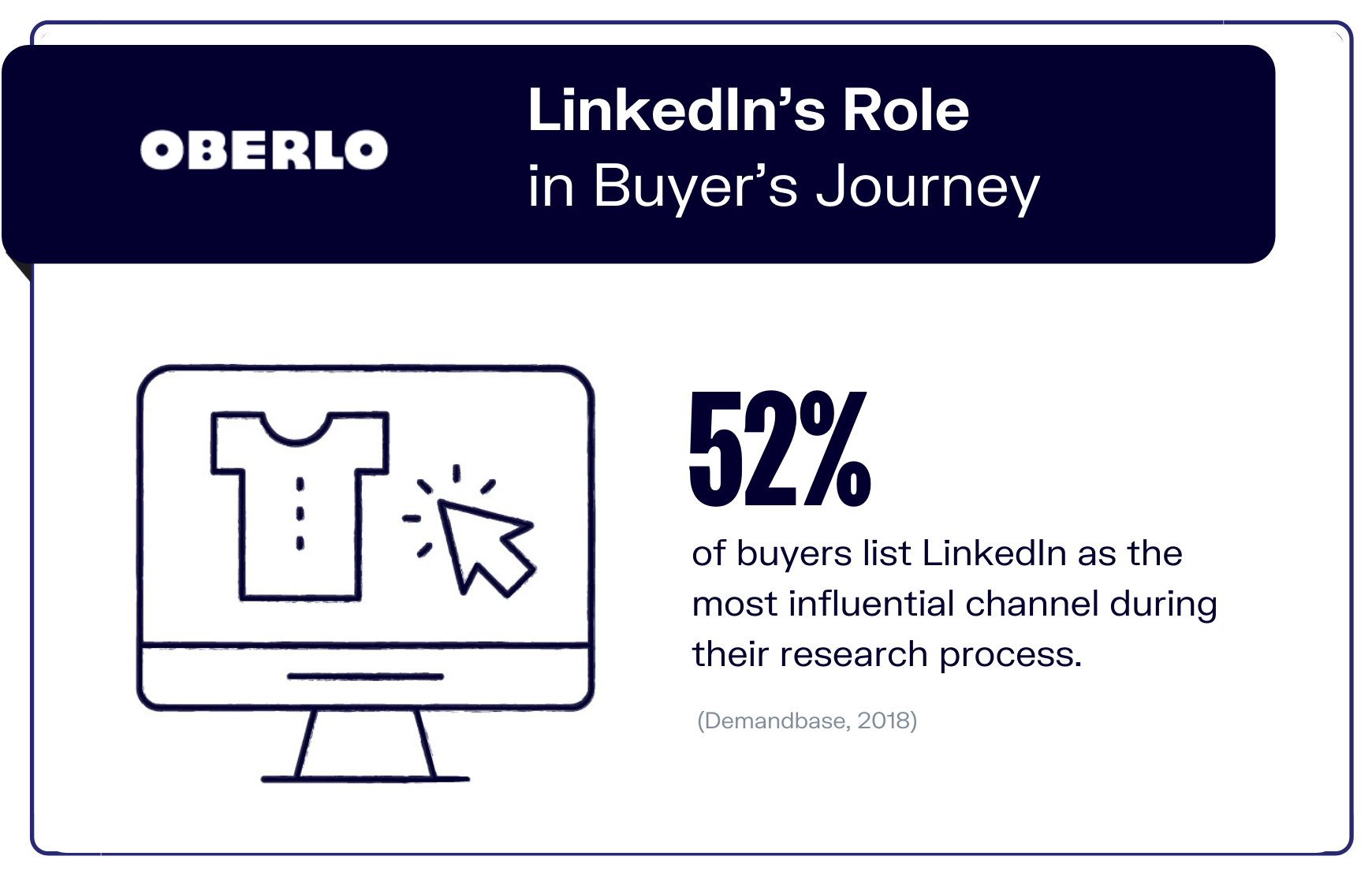
Given the increasingly widespread use of social media these days, it should come as no surprise that social networks today have immense influence over a buyer’s purchase decision.
In fact, it is estimated that more than seven out of ten buyers are influenced by social media when deciding to purchase a product or service.
Of all the social networks, LinkedIn seems to have the upper hand. 52 percent of buyers list LinkedIn as the most influential channel during their research process (Demandbase, 2018). This is followed by 42 percent of buyers who list blogs as having the biggest influence on their research.
In general, buyers who rely on social media for their purchase decision do so to get recommendations and opinions and to connect with sellers.
10. LinkedIn's Mobile Traffic
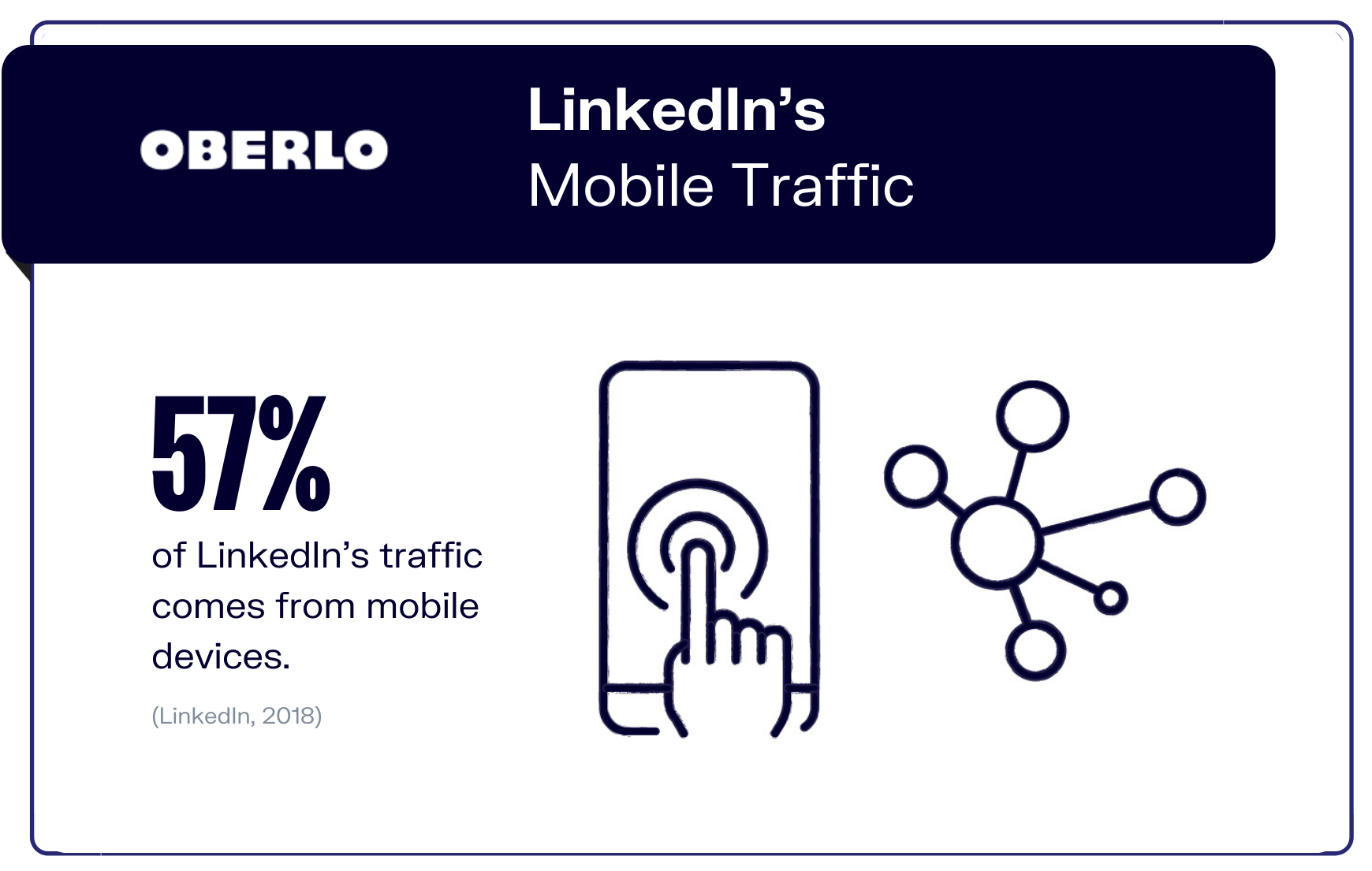
With the rise of the usage of mobile devices, mobile web traffic has logically increased along with it. As a matter of fact, overall mobile traffic is expected to increase five-fold between 2018 and 2024.
To further put things into perspective, the average smartphone user in the US currently consumes 8.6GB of data per month. This is expected to increase to 50GB come 2024.
Currently, the majority of overall internet usage is mobile, and LinkedIn is certainly no exception to this: 57 percent of LinkedIn’s traffic comes from mobile devices (LinkedIn, 2018).
Even though this is a relatively low figure compared to Facebook (at 88 percent) and YouTube (at 70 percent), the fact that LinkedIn gets most of its traffic from mobile devices should be a big enough motivation for ecommerce store owners to consider a mobile commerce strategy – at least for their LinkedIn marketing efforts.
Conclusion
These LinkedIn statistics serve to help you better understand the platform and its users. That way, you can mine its potential to the maximum to drive traffic from LinkedIn to your website.
Whether you’re including LinkedIn as part of your sales process or simply using it as a free marketing channel for your ecommerce business, it’s a channel that’s not to be missed out on.
So if you’re not already on it, you might want to consider jumping on the bandwagon and use these LinkedIn statistics to your advantage before your competitors who are already on there get too far ahead.

Summary: LinkedIn Statistics
Here’s a summary of the LinkedIn statistics you need to know in 2021:
- LinkedIn has over 740 million users in more than 200 countries and territories across the globe.
- 57 percent of LinkedIn users are male and 43 percent are female.
- 37 percent of US adults who use LinkedIn are between 30 and 49 years old.
- Half of all US adults with college degrees use LinkedIn.
- Nearly 25 percent of all LinkedIn users are senior-level influencers.
- There are more than 55 million companies listed on LinkedIn.
- LinkedIn is the second-most popular social media platform among B2B marketers.
- The US offers the largest group of LinkedIn advertising audience with a reach of 160 million users.
- 52 percent of buyers says LinkedIn has the most influence on their research process before purchasing a product.
- 57 percent of LinkedIn’s traffic is mobile.



Want to Learn More?
- 101+ Best Small Business Software Programs You Need to Know About
- 13 Best Free Online Courses You Can Start Today
- How to Start an Online Store in 2021: A 7 Step Guide
- 10 Best Squarespace Alternatives for Every Kind of Website
Is there anything else you’d like to know about LinkedIn statistics and wish was included in this article? Let us know in the comments below!



